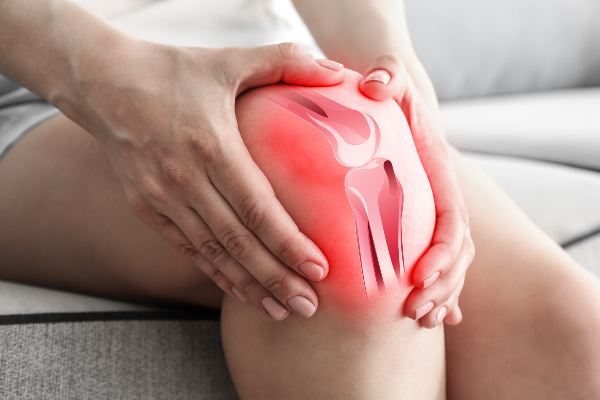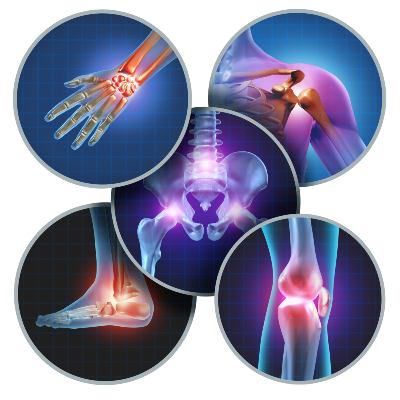Personal injury cases often have an additional component on top of the compensation for financial damages; this covers all the non-economic damages such as pain and suffering. Pain cannot be measured and is not accurately reflected in bills and receipts.
However, the victim deserves compensation for all that they had to bear, both physically and mentally. Thus a settlement sum covering the pain and suffering of the victim is not unheard of in the realm of personal injury law.
But since Florida is a no-fault state, meaning that the parties can only seek compensation from their own insurance coverage for the loss incurred by an accident, irrespective of who was at fault, things are a bit tricky in the pain and suffering arena.
This does not mean that you can’t claim a sum for your pain or sue the other party, only that certain conditions must be met before you get the option to do so.

Seeking the services of competent personal injury lawyers in such scenarios thus becomes priority zero if you wish to be reimbursed fairly.
As noted earlier, the losses for any personal injury accident case include both economic and non-economic damages. The former is quite easy to calculate because all that you need to do here to take all the receipts, sum up the medical costs plus other expenses, and factor in any long-term monetary drains or lost wages.
However, the latter is the harder of the two to calculate as it encompasses non-tangible losses: pain and suffering. You can’t make the insurance company feel or see your pain and there is no metric scale to measure it either, thus the calculation is tricky.
Simply put, there is no defined economic cost of damages for pain caused by a personal injury incident (i.e. a crash) because the severity of every case varies and so does the pain associated with it.
But in general, if the victim can prove that the event (car accident, medical malpractice, slip-and-fall accident, etc.) caused them sufficient physical and mental anguish, then the other party will be liable for paying a sum to compensation their agony.
This includes the physical pain of injuries, the mental pressure associated with the accident, any phobia that the victim may have developed, and so on.
Let’s say that the sufferer’s lifting ability was cut short drastically and this did not allow them to play with their children, then this will also be considered under the umbrella of pain and suffering.
Of course, certain injuries and damages are by nature more painful than others but the intensity matter as well. In some cases, the suffering may be momentary, in other cases, it may last for some days, while in severe cases, it may persist for much longer than that.
All of these cases will not be treated equally, especially in a no-fault state like Florida which limits your ability to sue the liable party except in cases that call for it, and even then you’ll have to prove that the conditions laid down by the state are met in your case.
So how do we calculate pain and suffering?
As noted earlier, pain and suffering cannot be defined on a metric scale or observed, but they are taken into account in the automobile accident settlement formula (the same is used for other personal injury claims processes).
Some methods of assigning a value to pain and suffering have been developed in the realm of personal injury law. Two of the most common ones employed by injury settlement calculators are the per diem and multiplier methods.
The per diem method simply puts the rate of pain and suffering equal to the daily earnings of the victim. Thus if a person makes, let’s say, $100 per day, then the compensation for their pain and suffering for two weeks will be $1,400 on top of what they got for their financial losses.
The major flaw in this method is that it does not address the severity of the pain and suffering but only the duration and thus it is not used as much as the multiple methods.
In the second method, based on an arbitrarily defined scale of pain and suffering, the victim is awarded a multiple between 1.5 and 5 which is then multiplied with their financial compensation to get the total compensation sum.
Although not perfect, the second method is still considered more applicable and fair for recovering bodily injury damages than the first one and many more like it.
Seek legal counsel from an experienced accident attorney, as soon as possible, if you wish to secure a decent accident payout.
Well, technically yes, but it’s not that simple.
As stated before, Florida is a no-fault state, and this is a huge problem. Normally, you’d expect the person at-fault person to pay up for the losses that you sustained because of their negligence or recklessness.
But this does not happen in a no-fault state.
Instead, everyone involved in a personal injury case will have to approach their own insurance companies for compensation. This means that the payout will be limited by what your policy covers, and you will be paying for a mess that someone else created.
However, some exceptions do allow you to sue the other party.
One possibility is that your insurance coverage may be insufficient to provide for all the losses that you sustained. This is possible considering that most drivers in Florida carry minimal insurance coverage, and thus the payout is also minimal.
The bare-bones insurance requirement for personal injury liability is $10,000 for one individual, twice the amount for two people, and $10,000 for property damage liability. This means that if the accident was particularly severe, your coverage may not be able to pay for the full extent of the damages.
This also includes pain and suffering.
In such situations, you can seek compensation from the other party’s insurer if the adjuster is willing to cooperate, otherwise, the court is also a perfectly valid option.
However, even then demanding reimbursement for pain and suffering is not that simple because the state regulates your legal options here, offering only a narrow window, which in this case is the injury threshold. Simply put, if your injuries are indeed serious enough to cause you pain and suffering, then and only then can you claim these damages.
If this part seems a bit unfair this is because it is.
As mentioned earlier, there is no way for a victim to make others see their pain and suffering because all of that is felt only by the sufferer. Thus even if you’re in deep pain, there are limits over your rights to demand compensation for that suffering.
However, in most cases, the conditions or limits are easy to fulfill. You can get compensated for most bodily injury claims, because almost all types of injuries, if major, can be painful, i.e. knee injuries (especially patella fracture), neck pain, hip fracture with surgery (the discomfort may not subside anytime soon), etc.

For that to happen though, your case must satisfy at least one (although the more the merrier) of the following conditions:
The first one applies in cases where let’s say the victim’s ability to lift objects is limited due to the accident. This means that if they were laborers, their earning potential will be hit. Moreover, they can claim that not being able to play with their children (lifting them, giving them rides, etc.) has put a strain on their mental peace.
As for a permanent injury or disfiguration, if the accident was severe, then there are chances that the victim may never completely recover from the damages incurred upon them. For such accident claims, the payout is usually very high because these injuries will haunt them for the rest of their lives.
In the case of wrongful death, the person’s estate executor can sue for the pain and suffering the person had to bear because of the incident, leading to their death, and for the losses incurred by the survivors of the said person due to their passing away (loss of companionship, loss of consortium, loss of sole family earner, etc.)
The suffering values for such cases are much higher.
A personal injury attorney will review your case, help you explore your legal rights (filing a personal injury lawsuit is one such right), and execute the legal process on your behalf.
As noted earlier, any personal injury case will involve two types of damages: economic and non-economic ones. Pain and suffering constitute the latter and are thus not so easy to deal with because they cannot be quantified as simply, nor added up as you would numbers.
However, the extent of pain and suffering is possible to estimate by taking a look at the details of the accident. Scrutiny will reveal that the suffering falls under three broad categories:
Physical Pain: Based on the intensity of the accident and the severity of the injuries, the victim may face anything between mild localized discomfort and agonizing pain radiating throughout the body. We know that some severe injuries can leave the sufferer in a world of pain, for instance, the symptoms associated with a traumatic brain injury are intense, to say the least (the same is true for comparable physical injuries such as broken bones, severe soft tissue injuries demanding skin grafts, shoulder injuries, leg injuries, debilitating neck injuries, spinal cord injuries, etc.) - they can be proven through medical records (i.e. that the pain was not caused by a pre-existing injury) and validate demands for a reasonable settlement for pain.
Emotional Pain: People tend to be traumatized by the experienced and thus lose their peace of mind, and if that happens, the victim may never feel the same ever again. Most car accident survivors become too scared to drive for the rest of their lives, others may develop a fear of the traffic itself, suffer from loss of enjoyment of life, and so on. Such agony, though not apparently visible, can leave lasting results and push people to the brink of collapse, and thus an insurance claim for pain also includes a demand for fair compensation for the emotional trauma faced by the victim.
Additional Suffering Damages: Negligence accidents can also result in certain unjust losses (special damages) that go beyond simple pain and discomfort. For instance, if a person suffering from a permanent disability then they can expect punitive damages for their extended suffering, the same is true if people lost the joy of their lives, fertility, and so on. All of these are also accounted for by the suffering calculator, and although the typical payouts are capped by policy limits of injury liability coverage, they may still be much more than what is offered at the start.
The odds of medical improvement, and the time required for it (if possible to begin with), are different for every type of accident, and thus there is no exact standard for an average settlement, instead, the sum will vary for every case. It is therefore important to call a lawyer and seek nothing short of what you deserve under the injury liability limits for your level of pain.
In case you go through with a civil lawsuit against the other party then be prepared for a firey legal process that awaits. Don’t expect the liable party to give up so soon, but your lawyer will be able to tip the scale in your balance if you have enough evidence to back up your claims.
Expert witnesses and eyewitness testimonies can also add credibility to your suffering claim.
But in the end, it will all depend on how well you can convince the judge and jury of your sufferings and thus the payout will also depend accordingly, most liberal juries are usually sympathetic to the plight of accident victims if they can prove it. Jury verdicts usually deliver fair compensation for the victim's noneconomic damages and suffering costs including any future pain that the injuries may cause.
These values for pain fluctuate across the board, your payout may reside anywhere between a couple of thousand dollars to hundreds of thousands, so don't rush through the auto accident settlement process before you know what to expect for your pain level.
Alternatively, things can be wound up with simple settlement negotiations if the other party is willing to cooperate.
There is another scenario here and that is if the other party is incapable of paying a decent sum of money for pain and suffering. In such cases, you may want to consider other options like digging into the personal injury protection segment of your insurance policy, or seeking a payout from your health insurance company, or exploring other liable parties, and so on.
Any fair settlement should cover both economic and non-economic losses incurred on an injury victim, except for very minor injuries. However, since Florida has decided to stick with the highly unfair no-fault system, it is very difficult for people to bag a fair personal injury settlement for their personal injury claim.
Does this mean that you should give up?
No, not at all.
Instead, avoid any delays in contacting competent auto accident lawyers (or experienced attorneys of the relevant field) from a reputable injury law firm for legal advice and to win you your rightful compensation sum based on fair settlement values for your sufferings.

If you’re worried about paying the lawyers’ fees, then rest assured you won’t be burdened by the experienced team at VG Law Firm, because we operate on a contingency fee basis plan.
It's pretty simple: no win, no pay.
Call us today to explore your legal options further!